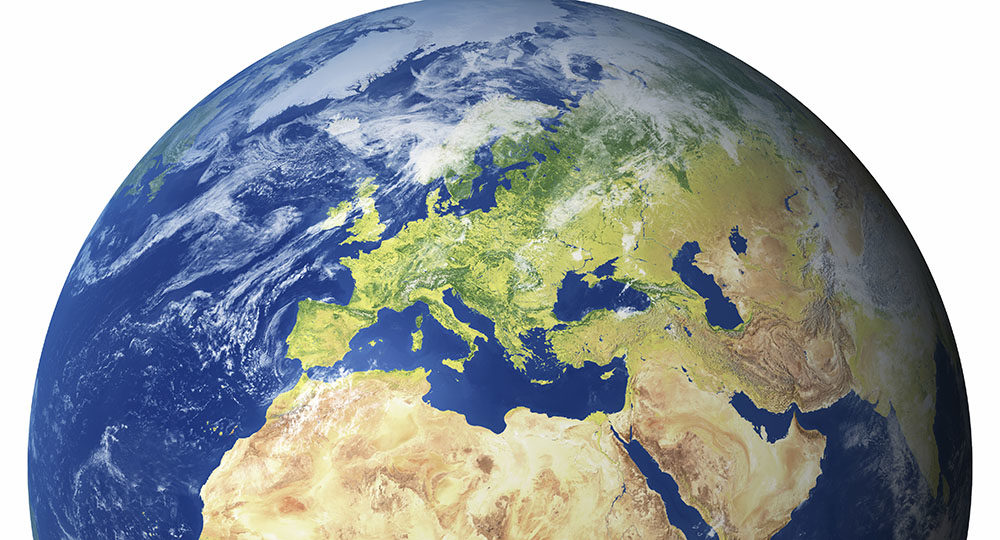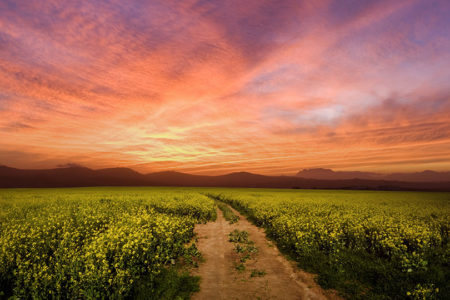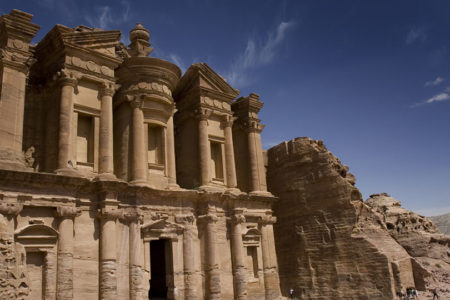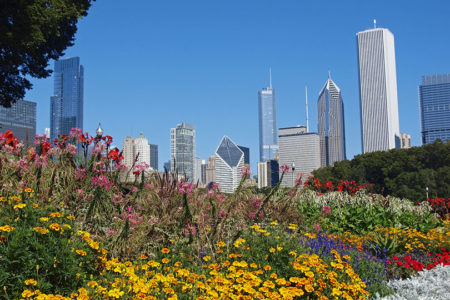‘Behold I Make All Things New’
If you did an Internet search asking the question, “What is heaven like?” you would receive 338 million “hits.” Most people want to know what will happen to them after they die. Where will they go? What will it be like? God has provided that information in His Word. In addition to telling us about the Lake of Fire—where Satan, the demons, and all unsaved humanity will spend eternity—He also has told us about the eternal and glorious destination of the redeemed: the new heavens, new Earth, and New Jerusalem.
Contrary to what scientists today claim, the world will not end due to global warming. Its demise will be far more dramatic: “The heavens will pass away with a great noise, and the elements will melt with fervent heat; both the earth and the works that are in it will be burned up” (2 Pet. 3:10). Then God will create something entirely new and magnificent.
This event will likely occur at the end of the Millennium (the Messiah’s 1,000-year reign on Earth) because the apostle John wrote, “And fire came down from God out of heaven and devoured” the evildoers (Rev. 20:9). This judgment by fire is the book of Revelation’s final reference to the physical earth inhabited today. Wrote theologian Dr. Charles Ryrie, “The present creation will be destroyed so that it may be cleansed from all the effects of sin (2 Pet. 3:7, 10, 12).”1
The New Heavens and New Earth
John continued: “Now I saw a new heaven and a new earth, for the first heaven and the first earth had passed away” (Rev. 21:1). “The new heaven,” wrote biblical expert Dr. John Walvoord, “refers not to the abode of God, but to the earth’s atmosphere and planetary space.”2
The concept of a new heaven and new earth are not original to Revelation; the Jewish prophet Isaiah said the same thing: “Therefore thus says the Lord Gᴏᴅ:…‘I create new heavens and a new earth; and the former shall not be remembered or come to mind’” (Isa. 65:13, 17). Both Isaiah and John imply that these entities will be brand new, not merely recreations of the originals.
There also will be “no more sea” (Rev. 21:1). “In contrast with the present earth, which has most of its surface covered by water,” explained Walvoord, “no large body of water will be on the new earth.”3
Instead of pain and suffering, there will be joy, peace, and fellowship with the Lord forever: “God will wipe away every tear;…there shall be no more death, nor sorrow, nor crying. There shall be no more pain, for the former things have passed away. Then He who sat on the throne said, ‘Behold, I make all things new’” (vv. 4–5).
All inhabitants will have physical, resurrected bodies as Jesus had when He appeared to His disciples after He arose from the dead (Jn. 20—21).
The New Jerusalem
In addition to the new heavens and new earth, believers will enjoy a magnificent city called the New Jerusalem: “Then I, John, saw the holy city, New Jerusalem, coming down out of heaven from God” (Rev. 21:2). Isaiah also foretold of this city: “Be glad and rejoice forever in what I create; for behold, I create Jerusalem as a rejoicing….The voice of weeping shall no longer be heard in her, nor the voice of crying” (Isa. 65:18–19).
Many scholars, including Walvoord and Ryrie, believe the New Jerusalem will be home to the resurrected saints who will be part of the King-Messiah’s administration in the Millennium. Since Scripture does not place the city on Earth, many say it will hover over the earth. Wrote Walvoord, “It may be demonstrated from Scripture that (1) the heavenly Jerusalem is the eternal habitation of all resurrected and translated saints; (2) the heavenly Jerusalem is in existence in the millennium.”4 It simply makes its first appearance in Scripture in Revelation 21.
Walvoord said it may depart for a time when the present earth is destroyed: “The New Jerusalem then will apparently be withdrawn from its proximity to the earth when the earth will be destroyed at the end of the Millennium, and then will come back after the new earth is created.”5
The city is an enormous cube: “The city is laid out as a square; its length is as great as its breadth” (Rev. 21:16). The measurements given in the Bible are “twelve thousand furlongs [1,500 miles]. Its length, breadth, and height are equal” (v. 16). To place that measurement in perspective, it is 1,531 miles (2,464 kilometers) from Bangor, Maine, to Orlando, Florida. Consequently, the New Jerusalem will have a volume of 3.4 billion cubic miles.
It will be a magnificent metropolis. The apostle John said he saw “the great city, the holy Jerusalem, descending out of heaven from God” (v. 10), having 12 gates (three on each side), each constructed from a single pearl (v. 21). “And [the] names written on them…are the names of the twelve tribes of the children of Israel” (v. 12).
In addition, there will be 12 foundation stones under the wall, “and on them were the names of the twelve apostles of the Lamb” (v. 14). The city wall’s foundation will be encrusted with jewels: “The construction of its wall was of jasper; and the city was pure gold, like clear glass. The foundations of the wall of the city were adorned with all kinds of precious stones” (vv. 18–19). “The street of the city was pure gold, like transparent glass” (v. 21).
There will be no sun, moon, or stars “for the glory of God illuminated it. The Lamb is its light” (v. 23).
The New Jerusalem will also be home to the “tree of life” (22:2) and “the throne of God and of the Lamb” (v. 3). Best of all, we shall behold Him because the Bible declares that all who dwell there “shall see His face” (22:4).
So for all eternity, the redeemed throughout all the ages will enjoy perfect peace; glorified bodies; and the new heavens, new Earth, and New Jerusalem. And all God’s people said, “Amen.”
ENDNOTES
- Charles C. Ryrie, The Ryrie Study Bible, NKJV (Chicago, IL: Moody Press, 1985), 1,955 n Revelation 21:1.
- John F. Walvoord, “Revelation,” The Bible Knowledge Commentary, ed. John F. Walvoord and Roy B. Zuck (Wheaton, IL: Victor Books, 1985), 2:983.
- Ibid.
- John F. Walvoord, “The Doctrine of the Millennium Part IV,” Bibliotheca Sacra 115:460 (Oct. 1958), 292 <galaxie.com/article/4186>.
- Walvoord, “Revelation,” 2:984.








I understand this teaching to be eternity, “Behold I make all things new.” I have studied for a few years the Lord’s feasts in Leviticus 23, and found Revelation 21 is talking about the eighth day (of the Lord’s feast, which is after Tabernacles. Tabernacles represents the Messianic kingdom).
The Messianic millennium is different than the eighth day (eternity), and it is difficult for me to understand which passages refer to which periods.
Do you understand the difference between them? Isaiah 65:17-25 may be referring to eternity (eighth day).
Good teaching.